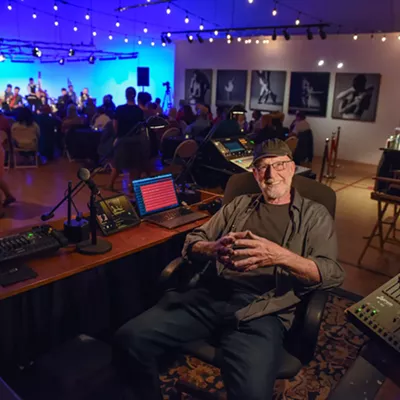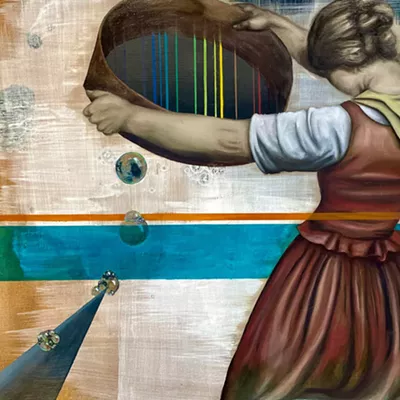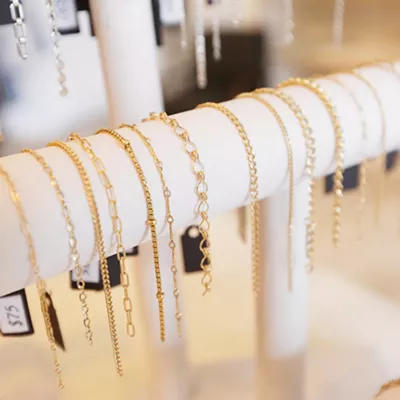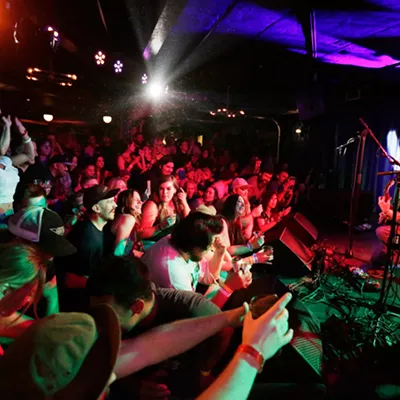When I'm at a live music show and notice audience members who seem unaware of the, um, best practices for attending a concert, I extend grace. After all, a show is a ritual with complex details and unwritten rules — varying slightly according to musical genre — that must be learned by experience, often through embarrassment and pain.
Though I've been a showgoer since I was 12 — and received plenty of guidance from concert-loving parents and older friends with Lollapalooza stories — I've still been shushed for talking loudly over a soft Decemberists song. I've suffered a gnarly toenail injury from a Yeah Yeah Yeahs show. Learn from my mistakes!
For the past few years, I've also worked at a live music venue: stamping wrists, vacuuming drum rugs and gathering inside knowledge on what makes a show great — great for the audience, performers and venue staff alike. So let me be your older, music-obsessed friend and slip you some advice.
LOAD IN
Leave the flip-flops and sandals at home if you're heading to a general admission (unseated) section or packed dance floor. Instead, wear closed-toe shoes that can handle a little spilled beer and protect your feet from accidental stomps and the potential of shattered glass. No matter how tempting, don't kick off your shoes and dance barefoot. Sneaky glass shards lurk on every venue's floor!Do your future self a huge, healthy favor (for under seven bucks!) and acquire a pair of industrial ear plugs with a tri-flange design — not the foam kind. Then remember to actually wear them during concerts and loud DJ sets. Choose plugs that include a tiny case so you can store 'em in your purse, car or on a keychain. They're not dorky, they're smart!
Full-size backpacks are a nope. Most music venues don't allow them due to weapons and contraband concerns. Plus, no one wants to be grooving one minute, then hit in the gut by an adult Ninja Turtle shell (i.e., a heavy JanSport) the next. Mini backpacks are usually fine. For show totin' needs, I prefer fanny packs, small purses with cross-shoulder straps and canvas tote bags (note: Spokane Arena only allows clear totes of a limited size).
Dress in layers to adjust your personal thermostat throughout the night, but keep in mind: Coat check service and lockers (love you, Nyne!) aren't offered at every venue. So think twice about donning a floor-length faux-fur coat unless you're certain you can check it. Also, not every venue allows concertgoers to leave the building and reenter.
BODY MOVIN'
Performers don't like 35 feet of empty space between the stage and their audience. In May, I heard acoustic musician Payge Turner tell one timid Spokane crowd: "I ain't singin' shit until you squish in!"
So mind the musician and close the gap without crushing others. No matter how close to the stage you stand, don't touch the band's instruments, and do not place your drink on amps or near pricey effects pedals.
When you inevitably shift to a new spot, glance behind you to make sure you're not blocking a shorter person's view. If so, try to adjust. Eye contact and nonverbal gestures go far.
Stay aware of your surroundings: Are you blocking an exit, walkway or door? Sitting on steps or aisles that need to remain clear due to fire codes? If so, move.
Need to respectfully make your way through a crowd? Using two fingers, confidently double-tap the shoulder of the person you'd like to pass, perhaps while adding, "Comin' through!" or "Excuse me." Don't even think about caressing a stranger's lower back or grabbing their waist to move past. It's creepy. A concert isn't a free-for-all touch fest.
Getting lost in the music is the point of a show, but if you're swaying and shimmying with your eyes closed, do peek occasionally to avoid collisions. While musicians want an audience to dance, they tend to dislike synchronized clapping, a sweet crowd gesture that gets real off beat, real quick. Speaking of distractions, if you're the only one in the crowd scream-yelling lyrics, you're probably annoying those around you.
MOSH APPRECIATED
At certain high-energy shows by heavier-sounding acts, in an area near the front of the stage, you'll often witness explosions of slam-dancing, thrashing and punk pogo movements known as "moshing."
Mosh pit rule #1: If someone falls down, help them back up. Rule #2: Don't drag or push people into the pit if they clearly aren't participating.
A mosh pit is like a storm. You can usually notice one rumbling to a start. Like a storm, a mosh pit can be a cleansing, freeing, wild release of pressure. But, like any crowd scenario, it can also flip from fun to dangerous. If a pit forms near you but you don't want to be involved, quickly shimmy away while keeping your arms bent in 90-degree "shields" to protect your torso from impacts. Similar to advice for surviving a riptide: If you want to escape the pit, instead of moving directly toward the stage, move parallel to it until you're out of the chaos.
If you decide to stay in the pit, or even linger on the outskirts, strike a wide stance and bend your knees slightly. Stabilize your hips and get those bent-arm shields ready. Just to reiterate: Groping someone in a mosh pit is not OK. And neither is picking a fight, though friendly shoving is part of mosh culture. Everyone who catches the mosh spirit should feel free to let off steam near sweaty friends and strangers.
Despite the way movies portray rock shows and "grunge," crowd surfing rarely happens, especially not in smaller venues. If a person does get horizontal and embarks into a sea of raised hands, the performer is usually the one to initiate. ♦























